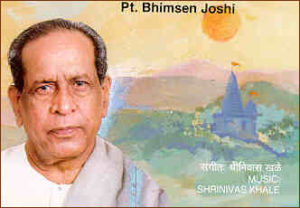 The predominant theme of bhajans or devotional lyrics, which are often set to music, is the love of man for God, which is represented in the form of woman’s love for man, and most particularly as the love of Radha for Krishna, a perennial theme of much of Indian painting, music, poetry, and folk art. Mirabai, a sixteenth-century saint and poet, became “mad” by virtue of her love for Krishna, and she speaks in her compositions of having to abandon this world. Bhakti literature shows a disdain for the conventional pieties and forms of Sanskrit literature, and bhakti poets advocated direct communion with God, having little use for the priestly brahmin class, or for other forms of institutionalized religion. Bhakti poets wrote in the vernacular tongues, but not only in an attempt to acquire a large following, for they thought of Sanskrit as a stagnant language. Another bhakti poet, Kabir, a weaver by birth, mocked the pretensions of both Hindus and Muslims, and described the adherents of both religions as bound by superstitions. He is known for having written in ulti-bhasa, the upside-down tongue, which is also to say that he thought of the world as an upside-down and peculiar place, where the innocent must struggle and the wicked prosper.
The predominant theme of bhajans or devotional lyrics, which are often set to music, is the love of man for God, which is represented in the form of woman’s love for man, and most particularly as the love of Radha for Krishna, a perennial theme of much of Indian painting, music, poetry, and folk art. Mirabai, a sixteenth-century saint and poet, became “mad” by virtue of her love for Krishna, and she speaks in her compositions of having to abandon this world. Bhakti literature shows a disdain for the conventional pieties and forms of Sanskrit literature, and bhakti poets advocated direct communion with God, having little use for the priestly brahmin class, or for other forms of institutionalized religion. Bhakti poets wrote in the vernacular tongues, but not only in an attempt to acquire a large following, for they thought of Sanskrit as a stagnant language. Another bhakti poet, Kabir, a weaver by birth, mocked the pretensions of both Hindus and Muslims, and described the adherents of both religions as bound by superstitions. He is known for having written in ulti-bhasa, the upside-down tongue, which is also to say that he thought of the world as an upside-down and peculiar place, where the innocent must struggle and the wicked prosper.
The lyrics in the selection are by Kabir; the musical composition is by Srinivas Khale, and the bhajan, entitled “Ye Tanu Mundana be Mundna”, is sung by Pandit Bhimsen Joshi, one of the greatest exponents of Hindustani music. Born on 4 February 1922 in the Dharwad district of what is now Maharashtra, Bhimsen Joshi received his training at the hands of Sawai Gandharwa, himself the most brilliant disciple of Abdul Karim Khan, who founded the Kirana gharana. His professional career has spanned nearly five decades.

